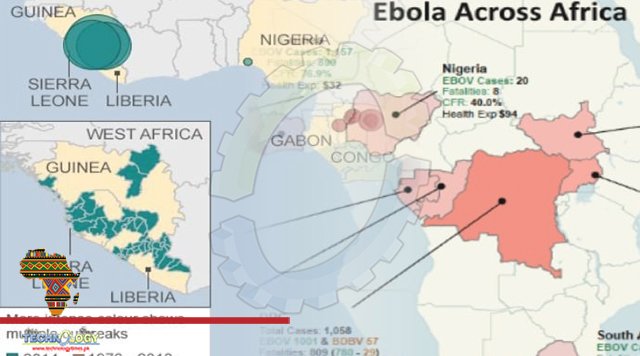Uganda’s Ebola outbreak, The biggest Ebola outbreak in human history happened in West Africa from 2014 to 2015. I was on the front lines in Liberia serving as the head of case detection for the National Ebola Response team and administering critical aspects of Liberia’s Ebola response.

The outbreak affected Sierra Leone, Guinea and Liberia. It claimed 11,310 lives and took 36 months to contain. It made its way along major highways from Guinea into Liberia and Sierra Leone, which share a long border. Uganda’s current Ebola virus outbreak has a few similarities. Uganda’s Ebola outbreak, The first case was found in Mubende district, located on a major highway to the capital city, Kampala, and neighbouring Democratic Republic of Congo – putting both at high risk. Ebola spreads through body fluids and direct contact. The infectiousness of the virus increases as patients get sicker – when they vomit and have diarrhoea. At death the virus is at its most virulent and thus any communal burial increases the spread. In the 2014/2015 outbreak there was widespread disbelief in communities, due to ignorance, distrust and some traditional beliefs. People didn’t cooperate with response teams. Fear and disbelief have also been documented in Uganda as four contacts of the alert case ran away from response workers. If people doubt they have Ebola – because symptoms of fever or vomiting are similar to other common illnesses like malaria and typhoid – they’ll seek healthcare from a range of places, including traditional healers and religious groups. And they could move to urban centres in search of better care. All of these behaviours increase the risk of a further spread of the virus and more deaths.
On the positive side, Uganda has the right basics to mount an effective response: experienced medical staff, knowledge and good infrastructure. The country has responded to four previous Ebola outbreaks. Its health systems are also in better shape than they were in three of the West African countries during the 2014/2015 outbreak. Health systems are as effective as the response and support they can get from the community. But the ability of Ebola to spread must not be underestimated. Uganda’s Ebola outbreak,There’s a knowledge gap about the actual start of the outbreak and the index (or first identified) case. This means the actual first human case of this current outbreak, coupled with increasing community infections and deaths, raises the risk of the outbreak spreading along the major highway to densely populated cities and neighbouring countries. There’s no approved vaccine for this strain of Ebola – the Sudan strain. This is due to the focus on Ebola Zaire, the most deadly and infectious strain, which was responsible for the 2014/2015 Ebola outbreak in West Africa. It’s therefore crucial that the region be prepared to work together to contain the spread of the virus. Drawing on my experience in the management of the 2014/2015 outbreak in West Africa, here are the five steps that might help East Africa curb the further spread of the virus.
Source: This news is originally published by allafrica